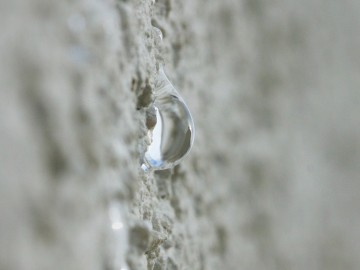
For Watertight Results
Waterproofing systems are used wherever water contacts buildings. They adhere well to substrates and are easy to apply. To ensure that waterproofing membranes afford reliable and lasting protection against water, they are modified with VINNAPAS® dispersions or dispersible polymer powders. The following short videos show why this is so, what the advantages are and what standards have to be met.
Testing What Matters
Waterproofing systems are designed to provide lasting protection against water – even when under hydrostatic pressure or in protracted contact with water. In our Technical Competence Centers, we test formulations in accordance with current standards and customer requirements to ensure that the waterproofing system delivers what it promises under the local climatic conditions.

WACKER tests waterproofing systems in its Technical Competence Centers all around the globe. The WACKER ACADEMY also offers training on waterproofing systems.
Whether in buildings or in infrastructure: wherever water and moisture are present, waterproofing systems take on an important role.
VINNAPAS® polymer dispersions and dispersible polymer powders are used to formulate waterproofing systems that act as a reliable and long-lasting barrier against water. They include 1-component and 2-component cementitious waterproofing membranes as well as ready-to-use 1-component waterproofing systems. These are easy to handle and can be applied with a trowel, brush or roller.
Waterproofing systems must adhere securely to the substrate, even under water pressure or when exposed long-term to water. In this test, the water impermeability of the specimens under pressure is tested. The standard is met if the waterproofing membranes are still watertight after seven days at 1.5 bar. Waterproofing systems modified with VINNAPAS® easily meet this requirement.
The ability to bridge cracks is also an important property that is enhanced by VINNAPAS® polymeric binders. That is because VINNAPAS® gives waterproofing systems the flexibility they need to bridge fine cracks caused by movement in the building fabric.
Crack-bridging ability is tested in two ways: as per EN 14891, which focuses on tests after exposure to various temperatures, and as per a specially developed WACKER method, which is a rapid test based on ETAG 022.
In wet rooms, waterproofing systems are installed between the masonry and the tiles. Although tiles are almost waterproof, the underlying substrate should be protected against moisture. Reliable waterproofing is therefore needed for preventing damage to the masonry. To ensure that a truly lasting waterproofing is created, WACKER tests formulations under the most realistic conditions possible – waterproofings in combination with tiles. The specimens are stored under various conditions as per EN 14891, after which the tensile adhesive strength is determined.
Another way to determine the flexibility of a formulation is to test its tensile strength. This test shows that formulations based on VINNAPAS® 754 ED have particularly high tensile strength and are very flexible.
VINNAPAS® 754 ED is ideal for 2-component waterproofing membranes used in kitchens and bathrooms. The new polymer dispersion features particularly good crack-bridging ability, very good tensile adhesive strength and high flexibility.
VINNAPAS® 764 ED possesses an outstanding overall property profile. Formulations based on VINNAPAS® 764 ED exhibit a combination of high flexibility – even at temperatures down to -20 °C – and improved tensile adhesive strength under all storage conditions.
Interested in our training courses for waterproofing systems? Visit: WACKER ACADEMY!



